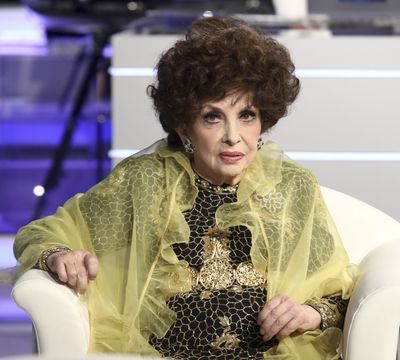Gina Lollobrigida, Italian film siren of the 1950s, dies at 95

The Italian movie industry after World War II was a juggernaut that competed alongside Hollywood as one of the world’s leading exporters of films.
But when Time magazine examined the might of Italian film production in 1954, it did not put Rossellini or De Sica on the cover. Instead it featured Gina Lollobrigida, a ruby-lipped bombshell encased in clinging gowns, whose presence in comedies, romances and adventures powered a rebellion against neorealism.
Gina Lollobrigida, who died Monday in Rome at 95, was for a time an international sensation with few equals.
In the estimation of actor Humphrey Bogart, her allure made “Marilyn Monroe look like Shirley Temple.” Life magazine called “La Lollo” – as she was nicknamed – “the most fetching argument ever advanced for liberal immigration policies.” For New York Times movie critic Bosley Crowther, she was “the original Italian over-stuffed star,” a pneumatic precursor to Sophia Loren, who would soon be ensconced in the public imagination as the quintessential Italian sex goddess.
Ms. Lollobrigida (pronounced lo-lo-BRIDGE-eeh-dah)was among the European screen beauties, along with Brigitte Bardot and Anita Ekberg, whose charms stirred the fantasies of a generation of moviegoers.
In a heyday that spanned a quarter-century and more than 50 films, Ms. Lollobrigida had a decidedly mixed reputation as an actress. “She is handicapped by a lack of intensity, lack of presence,” film historian David Shipman noted. He likened her sex appeal to the one dimensionality of an advertisement billboard.
She began her career on a lark in 1946, when a movie director eyed the onetime art student on the streets of Rome and was besotted. And it was a photo of Ms. Lollobrigida in a bikini that proved sufficient to entice billionaire industrialist and film producer Howard Hughes to fly her to Hollywood in 1950. He kept her a virtual prisoner for weeks in a fancy hotel, she later said, until she agreed to a contract. She said that she refused his sexual advances and that he, in return, made her prohibitively expensive for other filmmakers in the United States.
As a result, the younger Loren conquered Hollywood first. Ms. Lollobrigida, who often stoked their rivalry, would later cattily remark to Life: “We are as different as a fine race horse and a goat.”
Ms. Lollobrigida advanced up the marquee in European films. She made a bodice-busting impression in “Fanfan la Tulipe” (1952), a swashbuckler starring the French star Gérard Philipe. She had a breakthrough the next year, playing a sparky, barefoot peasant in the vivacious comedy “Bread, Love and Dreams” opposite De Sica, who was also a noted actor and portrayed the uptight but smitten Carabinieri officer.
Gennaro Sangiuliano, Italy’s culture minister, announced the death but gave no further details. A complete list of survivors was not immediately available.
Ms. Lollobrigida once told Vanity Fair magazine that, whatever her public image, she saw herself as essentially a solitary soul, needing little but art. “I have never made any compromise, remaining independent and always alone,” she said in 2015. “My strength is my free spirit, and my great imagination gives me strength and vitality.”